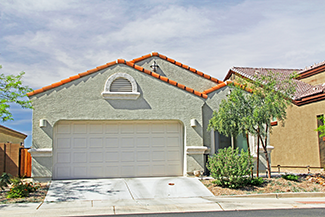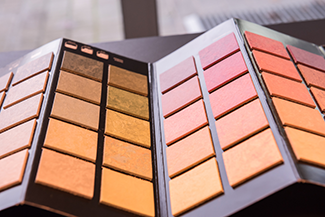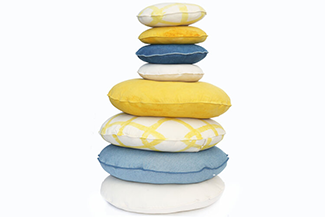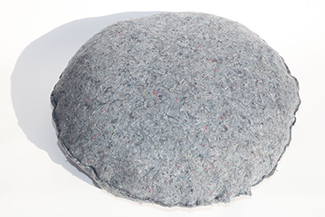Eco-Friendly Homes Go Beyond The Recycling Bin
 06 April 2021
06 April 2021 

Eco-friendly Homes Go Beyond The Recycling Bin
A recurring theme at the KBIS 2021 show was the homeowners’ desire for sustainable, compact floor plans ranging from 800-1500 sq. ft. with healthy home features and streamlined digital connectivity. The classic principles of “reduce, reuse, recycle,” continue to be incorporated in the design of the home, its features, and amenities.
Smaller Houses Are Big
 Heating and cooling is one of the largest costs and energy usage homeowners face. No matter how well they’re insulated, large houses take a lot of energy to heat and cool. If you are building a new house, consider downsizing. A smaller house will reduce the number of materials and the builder will be able to complete the project faster and with less natural resources.
Heating and cooling is one of the largest costs and energy usage homeowners face. No matter how well they’re insulated, large houses take a lot of energy to heat and cool. If you are building a new house, consider downsizing. A smaller house will reduce the number of materials and the builder will be able to complete the project faster and with less natural resources.
Rosie-Certified Partner, Chauncey Meyer, Architect AIA, J. Chauncey Meyer Architects Inc., notes that in terms of sustainability, his clients seek efficiency in their home’s design.
“All the things that are solutions for sustainability include the use of less gas, water, and electricity in the building’s design so they are efficient. Using less products reduces the impact of waste on society.”
Meyer also noted that the direction the home faces has an environmental impact. For example west-facing windows that allow a lot of sunshine to enter can make the home heat up, thus requiring more air conditioning to keep it cool and comfortable.
Who Let The VOCs Out?
A few years ago, a large discount flooring retailer was found to be stocking and selling laminate flooring that tested at some of the highest formaldehyde levels. The CDC notes, “not all laminate flooring releases high levels of formaldehyde. Also, studies have shown that after several years, formaldehyde released by products installed in the home may decrease to levels typically found in most homes.”

Mitch Taylor, owner, Bram Flooring, a Rosie-Certified Partner, explains that “everything is going to have some sort of gas, but it all has to meet codes.”
His customers request a lot of vinyl plank or stone-based plank -- anything that is waterproof or floating. Floating means the laminate is installed tongue and groove -- not glued down. His most popular line is COREtec. “In terms of design trends, square tile is obsolete. Long wood-looking tiles are the trend. Five or six years ago, no one knew about the vinyl plank. Now that is what they want.”
According to COREtec, their flooring is GreenGuard certified for sustainable flooring -- meaning their products are scientifically proven to meet some of the world’s most rigorous third-party chemical emissions standards, helping to reduce indoor air pollution and the risk of chemical exposure. Many of the options are also certified by FloorScore for low Volatile Organic Compounds (VOCs) which are a large group of chemicals that are found in many products used to build and maintain our homes. Once these chemicals are in our homes, they are released or “off-gas” into the indoor air we breathe.
Cofounder and design director of Healthy Materials Lab at Parsons School of Design, Jonsara Ruth, sees vinyl flooring being replaced by Marmoleum, which is the new linoleum, developed by Forbo and carpet companies eliminating the use of stain and water repellent chemicals.
Ecohome, a team of engineers, environmentalists, and former home builders note marmoleum is fairly easy to install, requires no toxic adhesives, and is durable. They claim, marmoleum gets tougher and more durable over time because the linseed oil continues to cure and harden. Yet it remains quiet and comfortable under foot. It comes in rolls, planks, and tiles. It is made from materials that are natural and renewable. The main ingredient is linseed which oil comes from flax seeds, an easily cultivated plant also used to make linen. No toxins are used or produced during the manufacturing, and no off-gassing occurs in homes after installation.

Besides using green ingredients, marmoleum has unique antibacterial properties because the ongoing oxidation of the linseed oil naturally inhibits the growth of harmful microorganisms, making it the flooring choice of many hospitals and health care facilities.
The cost for marmoleum runs $5 to $12 per sq.ft. per square foot plus the cost of installation.
Regardless of the type of flooring you choose, Taylor cautions, “the cheaper the price, the cheaper it was made.”
A Purpose for Scrapped Textiles

Elise McMahon, CRCL.EARTH, found an innovative use for textile scraps. Her circular throw pillows made from recycled fast-fashion textiles are made in Upstate New York. While teaching upholstery classes, McMahon learned that the majority of furniture cushions and interior pillows are made with petroleum-based foams that emit unhealthy chemicals. McMahon invented a safe, clean insert composed of denim composite and shredded fabric from fast-fashion waste.
Smart App, Are Ya?
John Carlsen, staff writer, SafeWise highlighted some of their favorite eco-friendly products from the Consumer Electronics Show 2021.
The Nudge Systems Pleco sensor attaches near the water meter and gives you up-to-the-minute information about how much water you use and allows you to track and improve your habits over time.
Hydraloop cleans and disinfects wastewater for other uses like toilets, washing machines, swimming pools, and gardening, which the company says can recycle up to 85 percent of a home's water. Not only does this cut down on your water bill, but it helps save this increasingly scarce resource. However, this type of product is not likely to be approved anytime soon by most building departments for two reasons; the use of wastewater and it’s high cost. But, it is an interesting product and worth watching how it evolves and is used.
Leviton introduced a new fuse box that helps monitor and tune your home's energy usage using your smartphone. By moving the focus to the fuse box, you have more control over your devices than any smart light switch or smart plug could offer.
Schneider Electric’s Square D Energy Center integrates with solar inverters, backup batteries and generators, thermostats, and meters. This electrical panel then uses artificial intelligence (AI) software to manage the home's energy consumption.
Support Local
Sourcing materials locally can significantly cut the cost and energy associated with transporting products while having a positive effect on the environment. We have talked about the delay in the manufacturing and shipments of materials and goods due to the pandemic. A 1,312ft., 200,000 ton ship carrying 18,300 containers was just stuck in the Suez Canal, further complicating supply by holding up billions of dollars of commerce a day. The additional costs to reposition and set that ship sailing will make their way to you, the consumer.
A Second Life
 Whether you are building a new home, remodeling, or updating the interior design, a popular eco-friendly practice is recycling. Yard sales and flea markets are excellent places to find textiles, furniture and other goods which can be refurbished.
Whether you are building a new home, remodeling, or updating the interior design, a popular eco-friendly practice is recycling. Yard sales and flea markets are excellent places to find textiles, furniture and other goods which can be refurbished.
Dubbed “grandmillennial style” by House Beautiful, younger homeowners are styling their interiors with furniture, art, or china that belonged to their grandparents This could be considered eco-friendly as the passing on of furniture and other heirlooms reduces the harvesting of new materials and the costs related to shipping.
Environmentally-Friendly Evolution
“We will return to using materials that originate from nature rather than highly processed synthetic materials,” Ruth insists. “To do this, architects and designers will demand ‘nutrition labels’ of materials to determine if they contain any harmful ingredients.”
Podcast
With various trends in new homes, there is a desire for sustainable, compact floor plans ranging from 800-1500 sq. ft. with healthy home features and streamlined digital connectivity. The classic principles of “reduce, reuse, recycle,” continue to be incorporated in the design of the home, its features, and amenities. We discuss some of the sustainable construction and comfort items you should consider.
###
Photo Credits:
- CRCL.EARTH
- Shutterstock
RELATED CONTENT:
- Certified Partner: J. Chauncey Meyer Architects Inc.
- Certified Partner: Bram Flooring
- Blog: What in the World Is a Whole House Energy Audit?
- Blog: Out-sulation
- Blog: Can You Cool Your House With Fans?
- Blog: Six Common AC Problems That Can Be Fixed
- DIY FAQ: Picking Your Power Plan
- DIY FAQ: Interior Design Trend | Natural And Comfortable
- DIY FAQ: Eight Ways To Make Your Home More Sustainable
- Podcast: Air Conditioning & Energy Audits
- External Resource: Forbo
- External Resource: CRCL.EARTH
- External Resource: New Line of Sustainable Throw Pillows
- External Resource: Clever.Com
- External Resource: LikeMindedObjects
Print this page
recent post
- Duck, Duck, Duct! How Often Should Ductwork Be Cleaned?
- Vinyl vs. Fiberglass Windows: Which Is The Better Choice Of Replacement Window?
- We May Be The Grand Canyon State, But The Rocky Mountains Are Important For Arizona
- Welcome to Arizona! Things A Newbie to Arizona Should Know
- The Pros & Cons of Buying A Flipped House
- Getting In On The Ground Floor
- Why It’s More Critical Than Ever To Get Your AC Serviced Before Summer
- The Reality of Remodeling
- What To Look For When Comparing Your Roofing Quotes
- What To Expect When Buying New Windows & Doors
